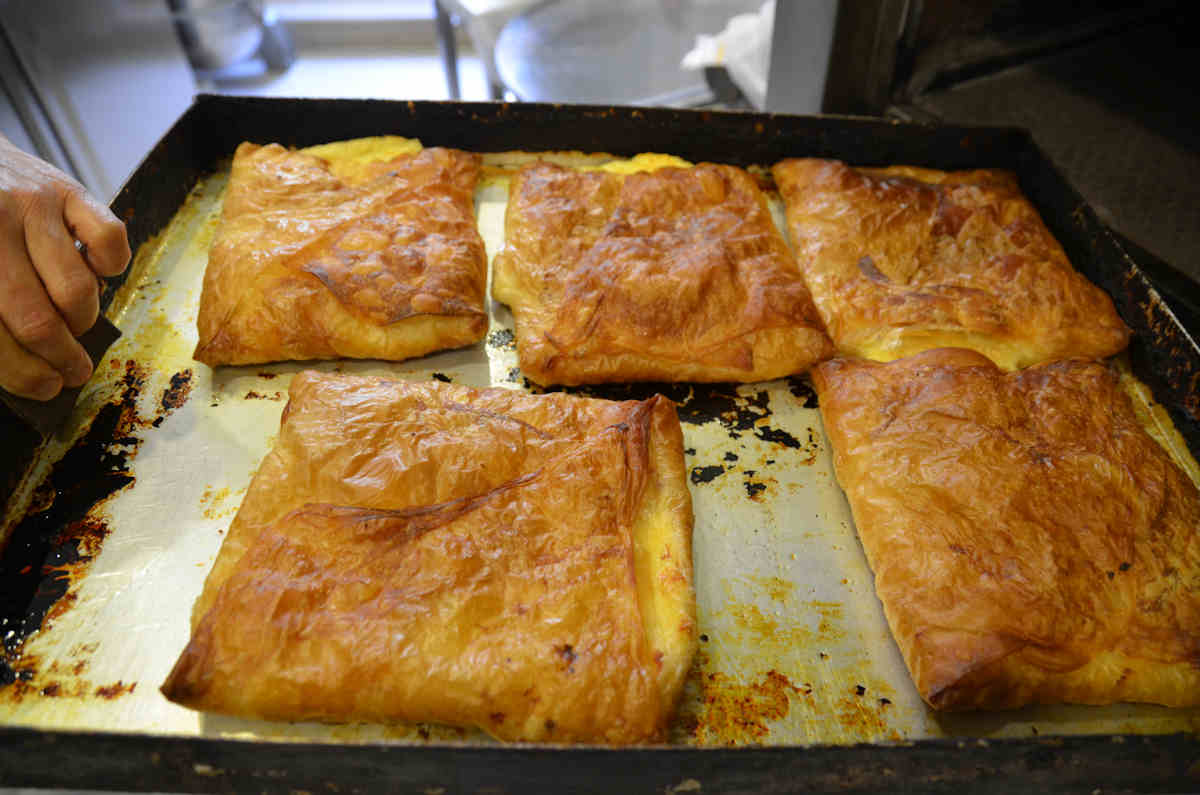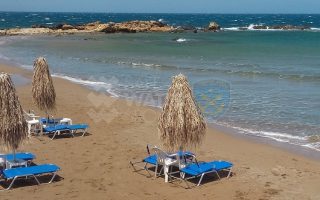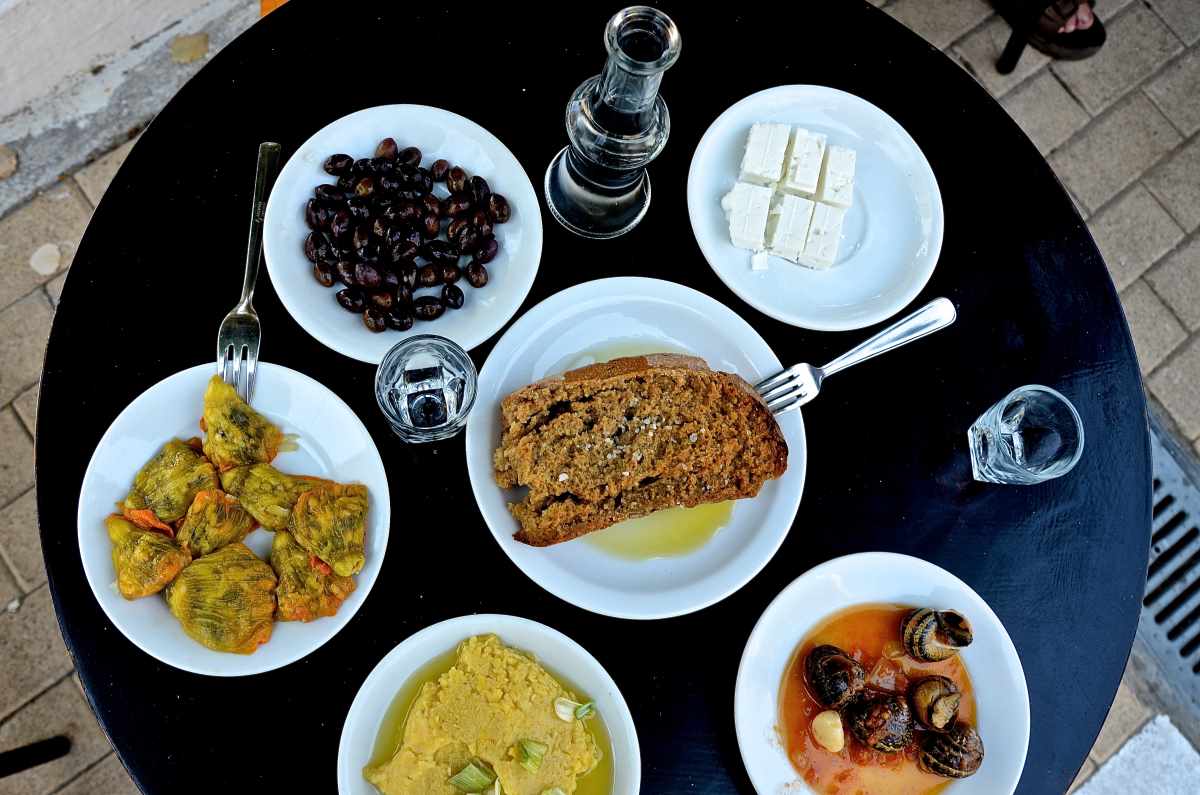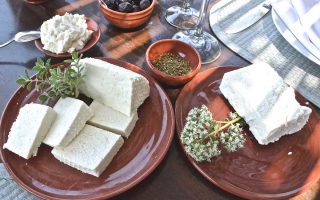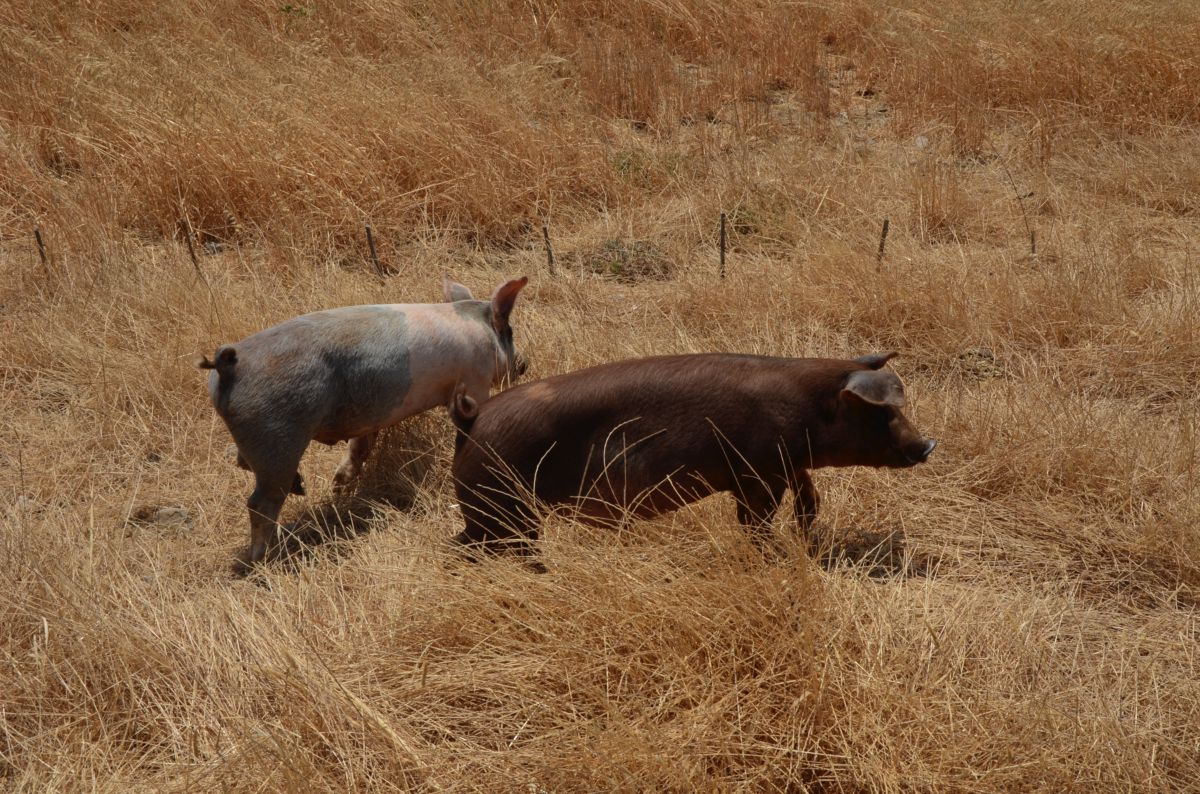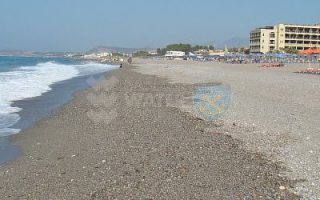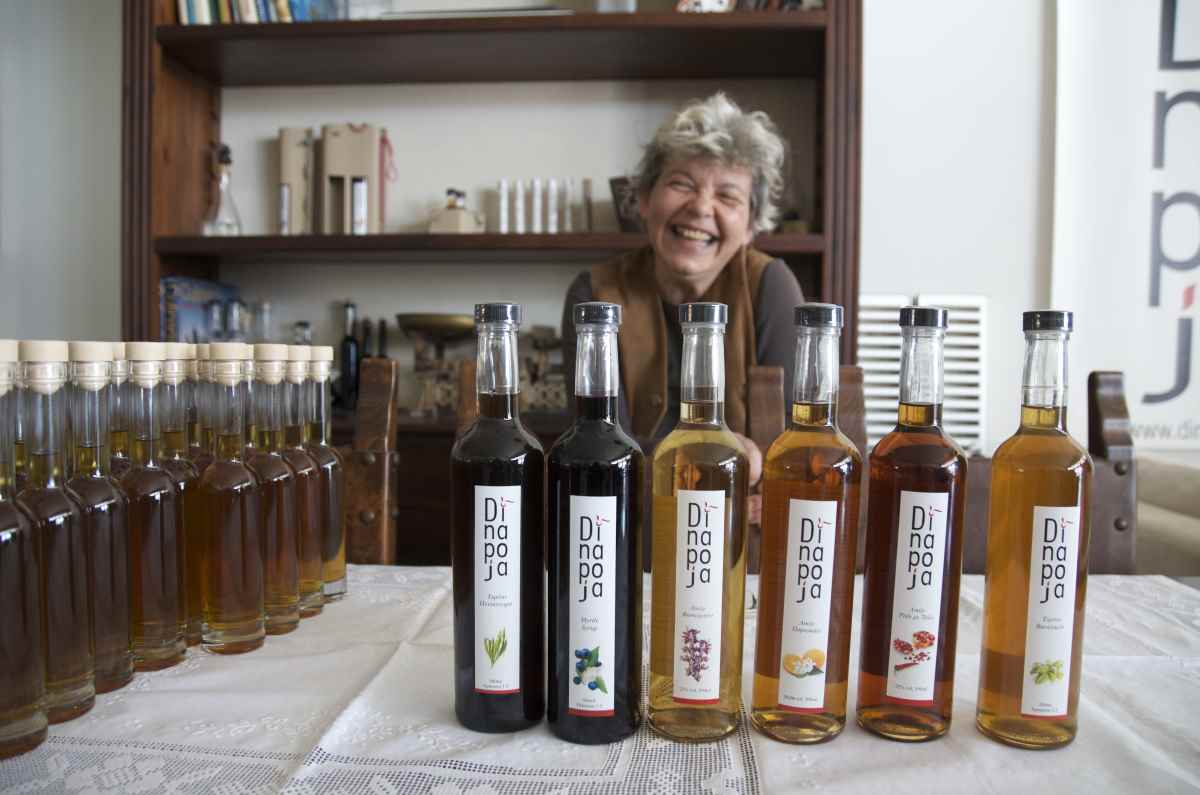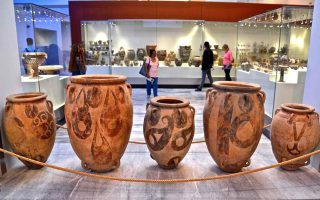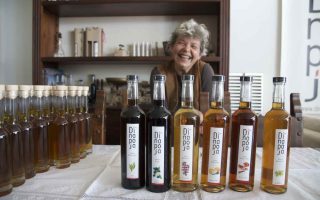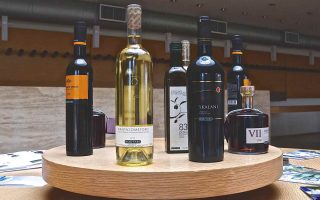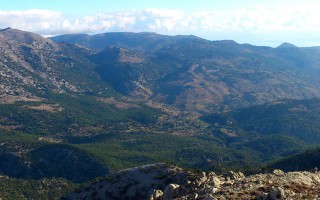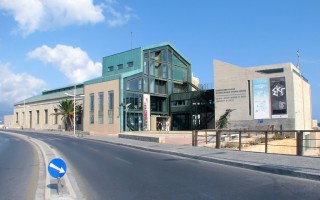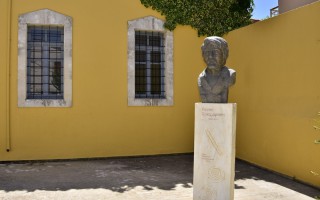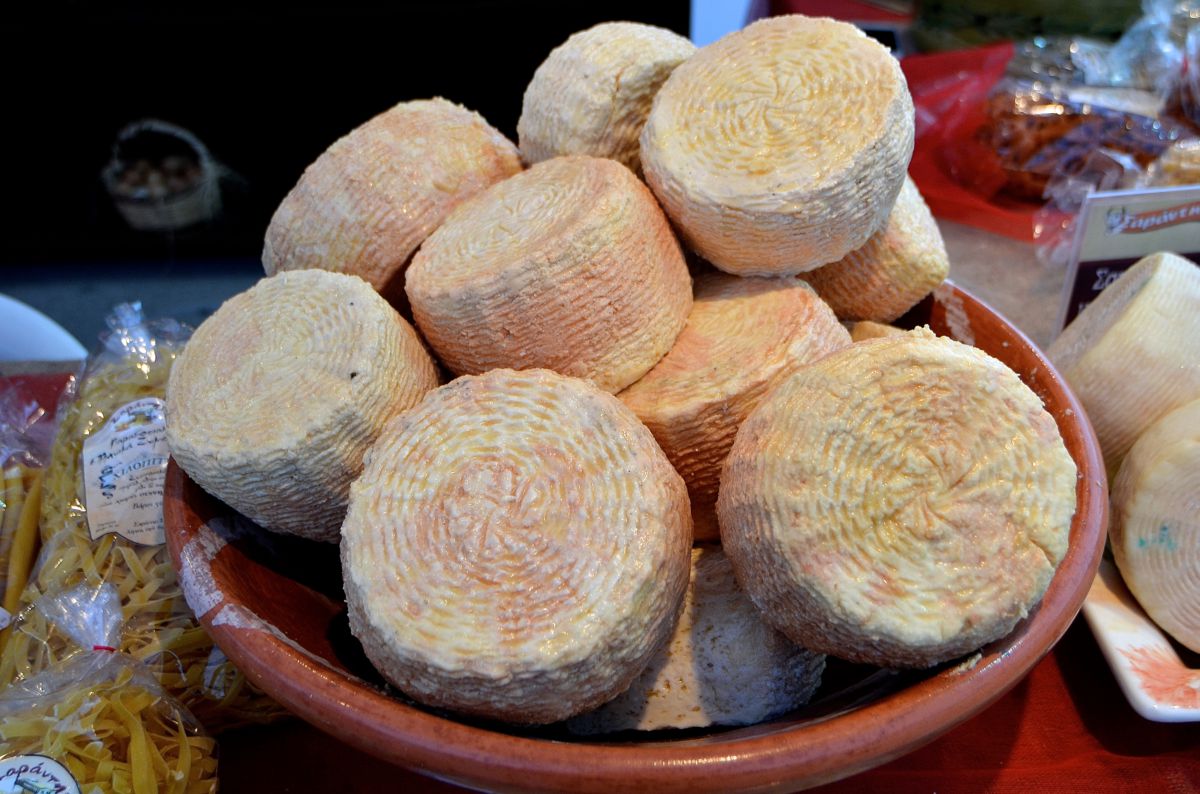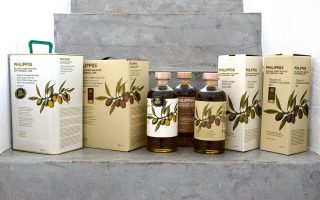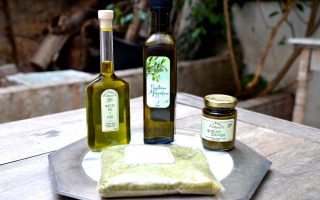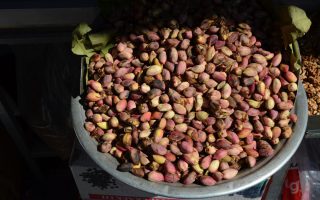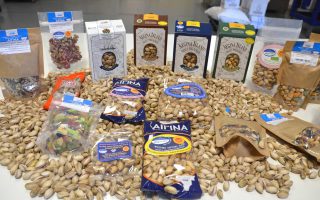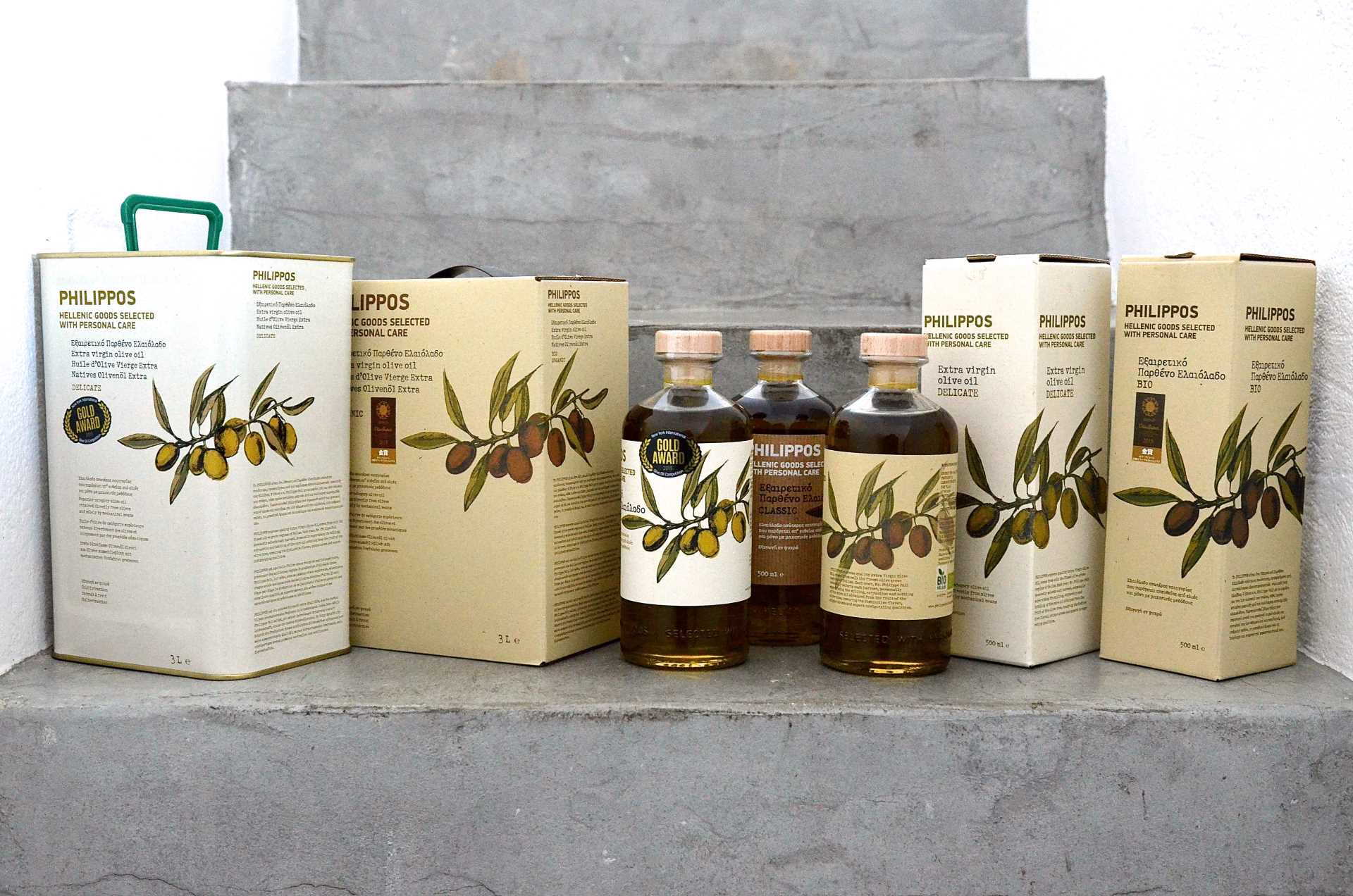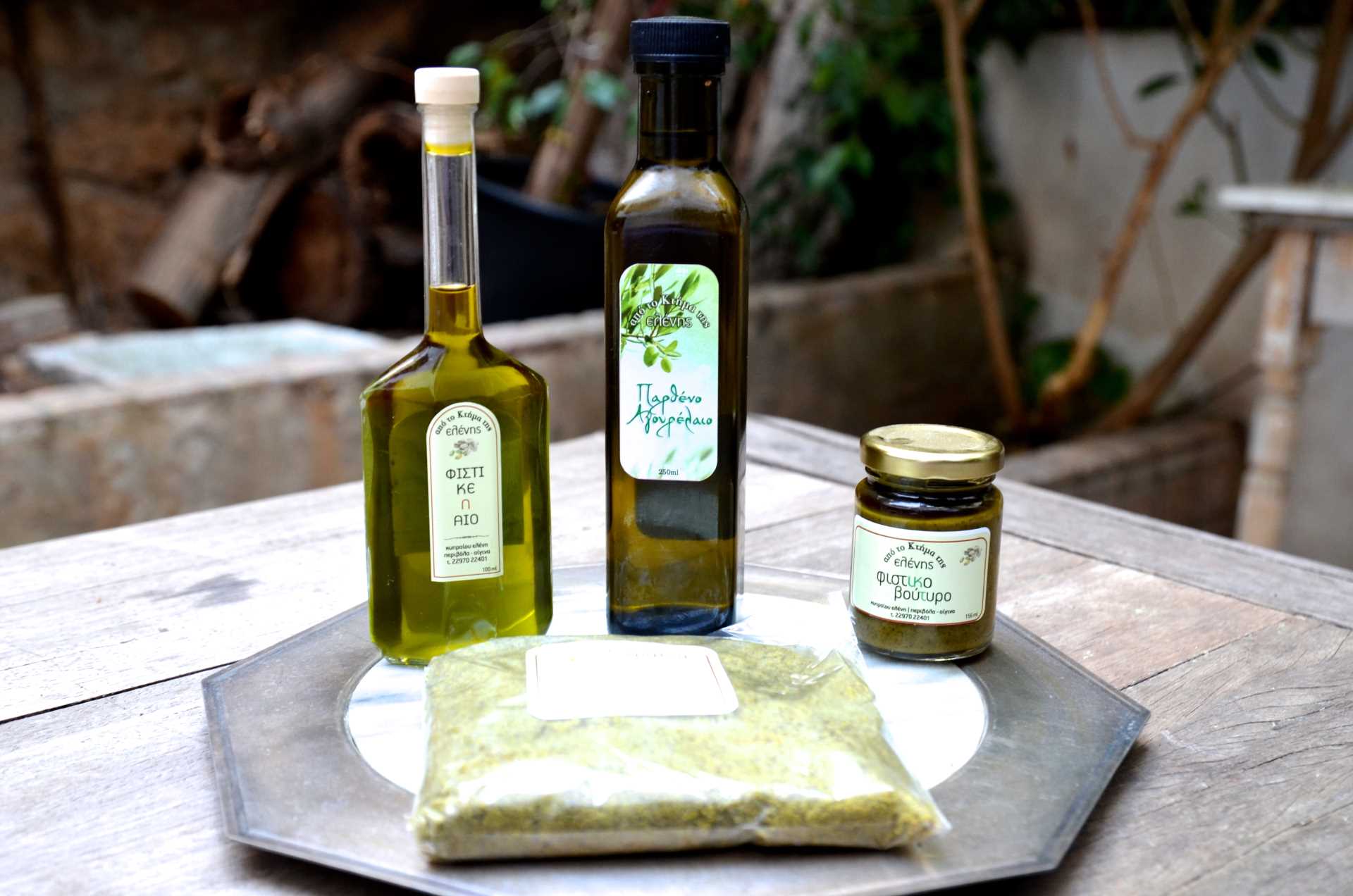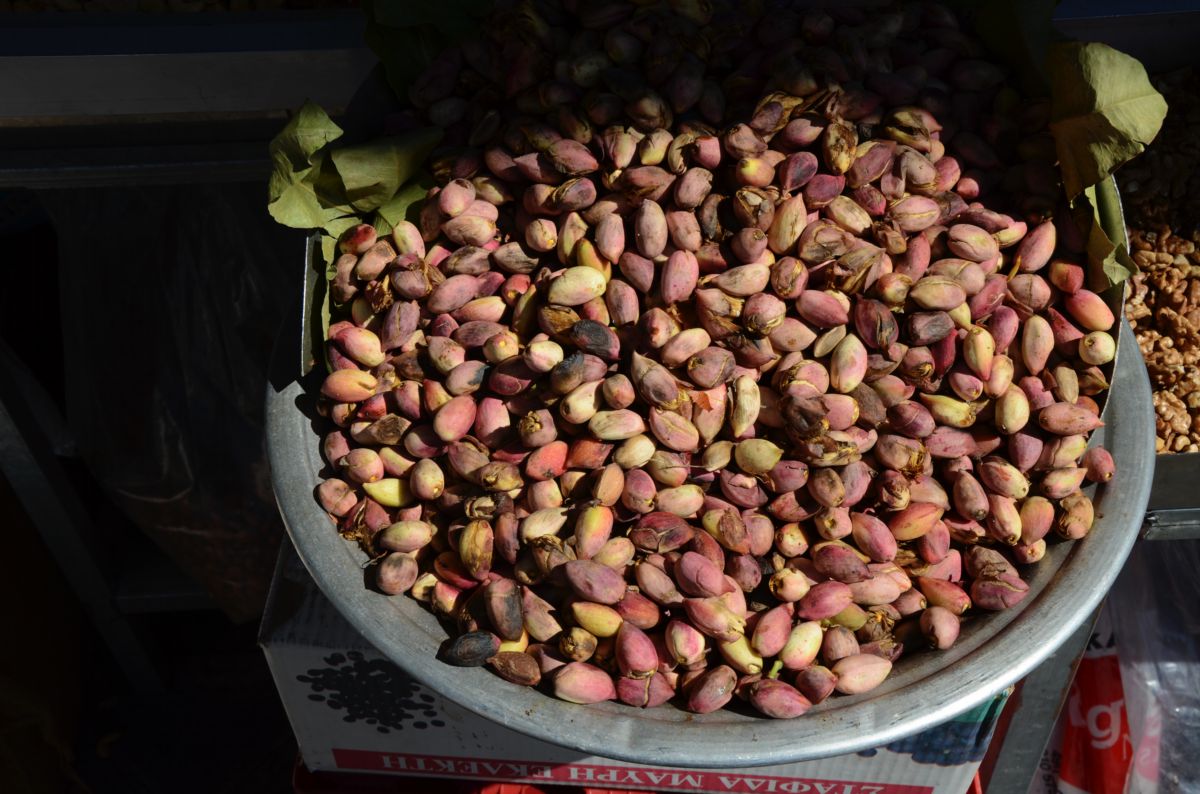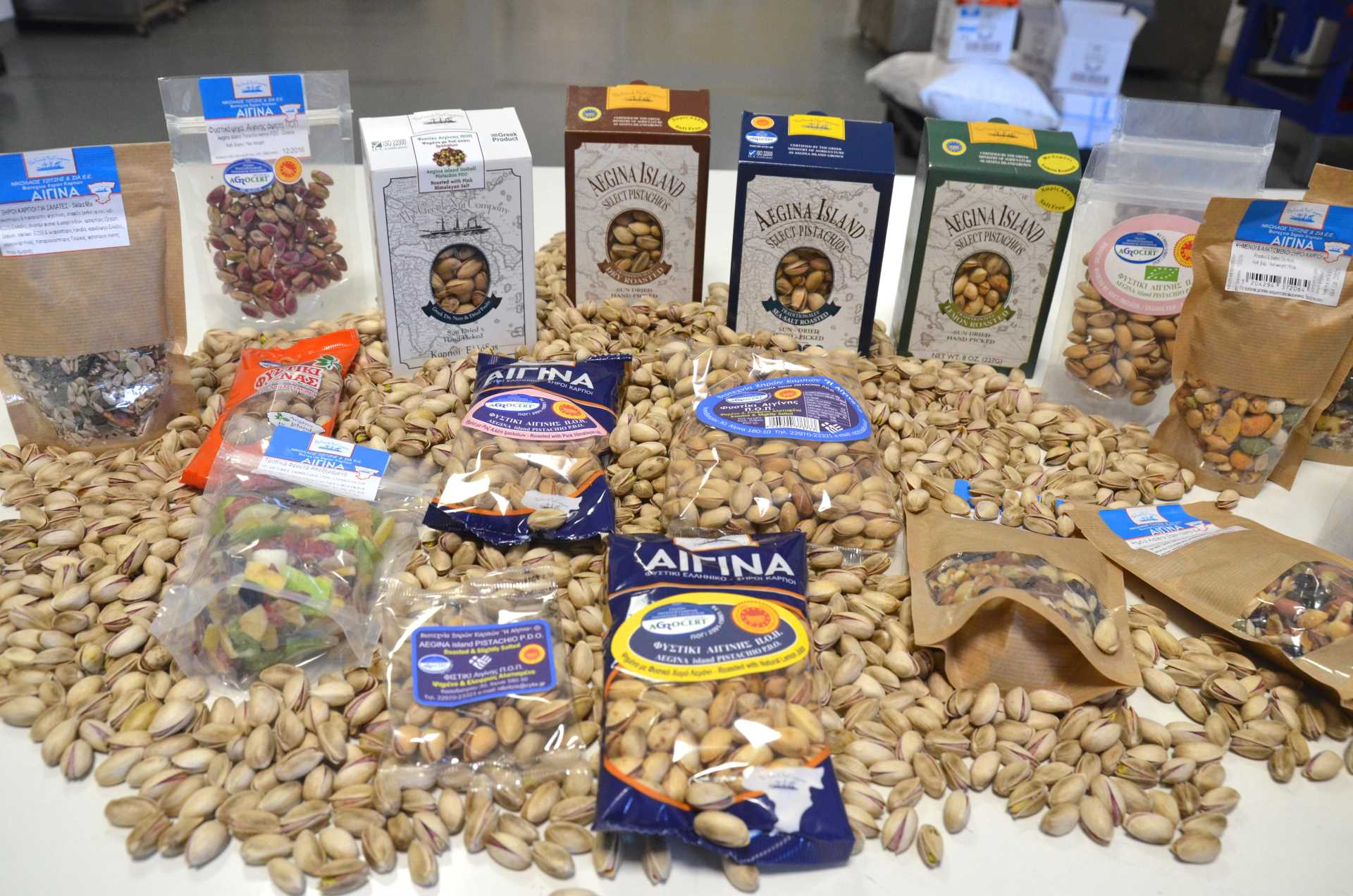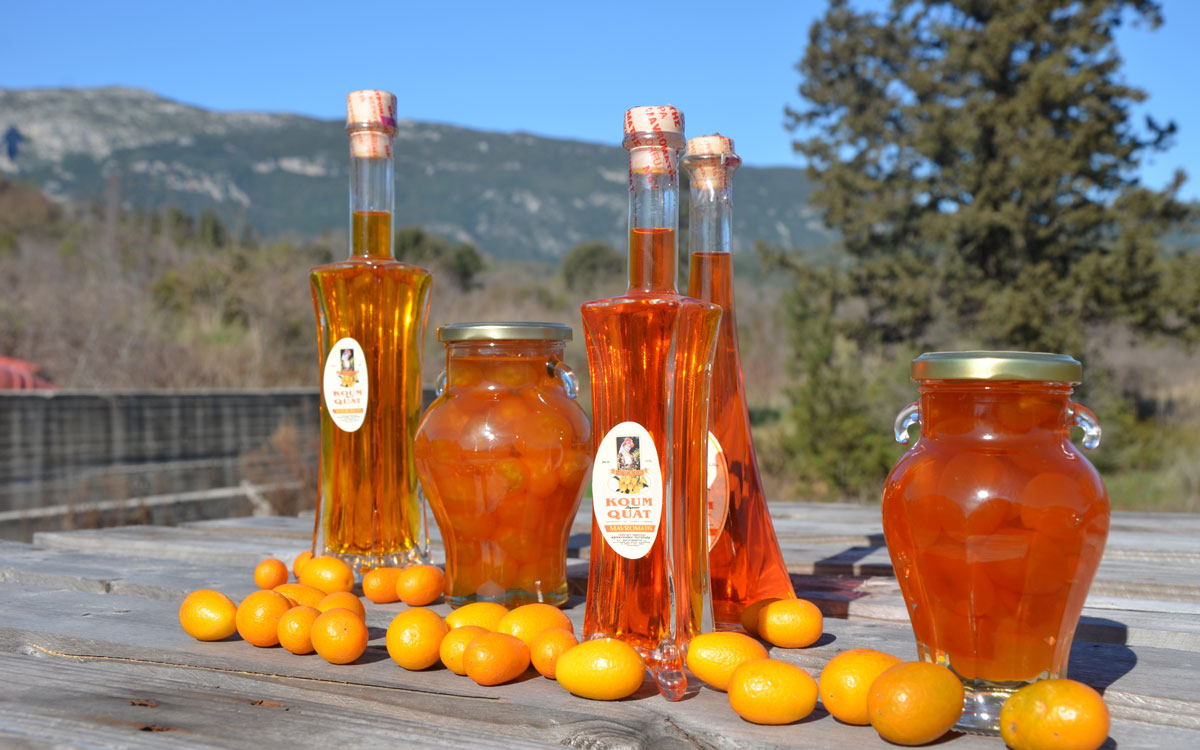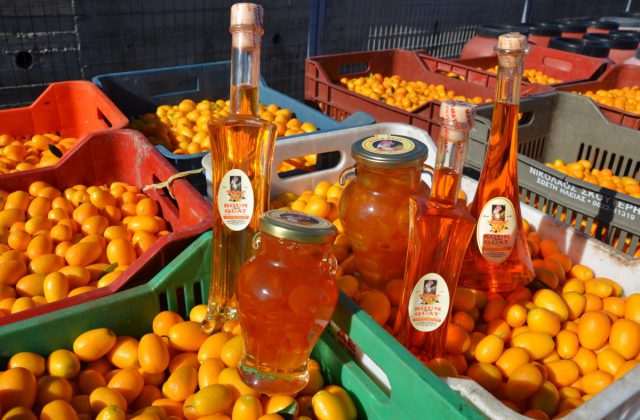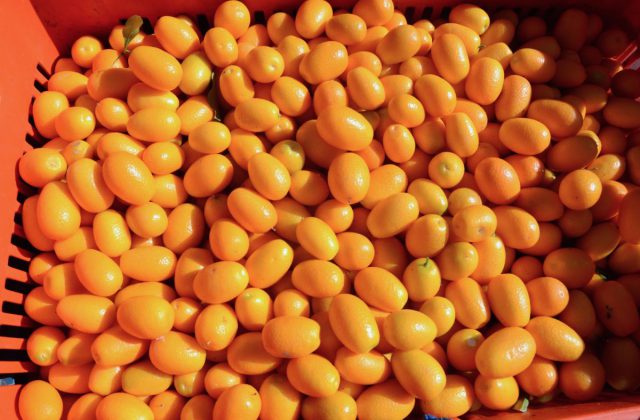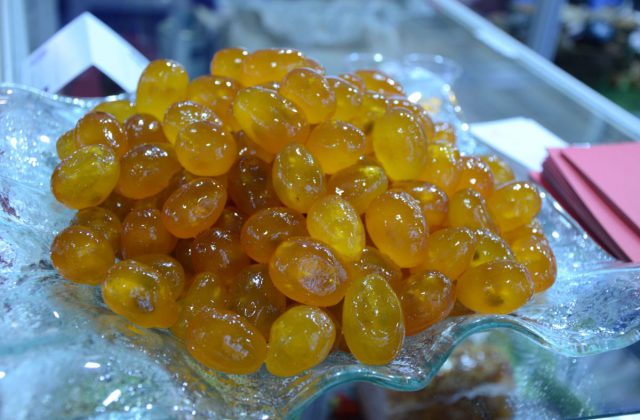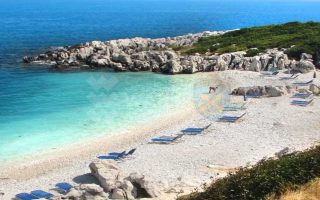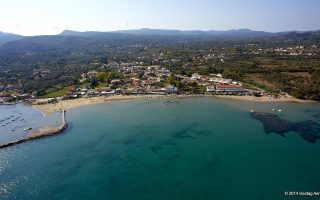In Chania, at the bougatsa shop of Iordanis, tables are populated since dawn with Chaniots and people who have just arrived from near-by villages to feast on their favourite bougatsa served on small zinc dishes.
Inspired rhyming verse inscriptions on the walls (sometimes even Cretan couplets) testify that this joint is one of people’s favourites.
“Whenever I come to Chania, I get those sugar cravings.
Eating one whole baking pan of bougatsa Iordanis is the only way to tame them (one baking pan though won’t do the trick)”.
Have a look at this one:
“Expensive labels mean nothing to me, even if it’s an Armani;
but the bougatsa I eat, must always come from Iordanis”.
Μore at Greek Gastronomy Guide…
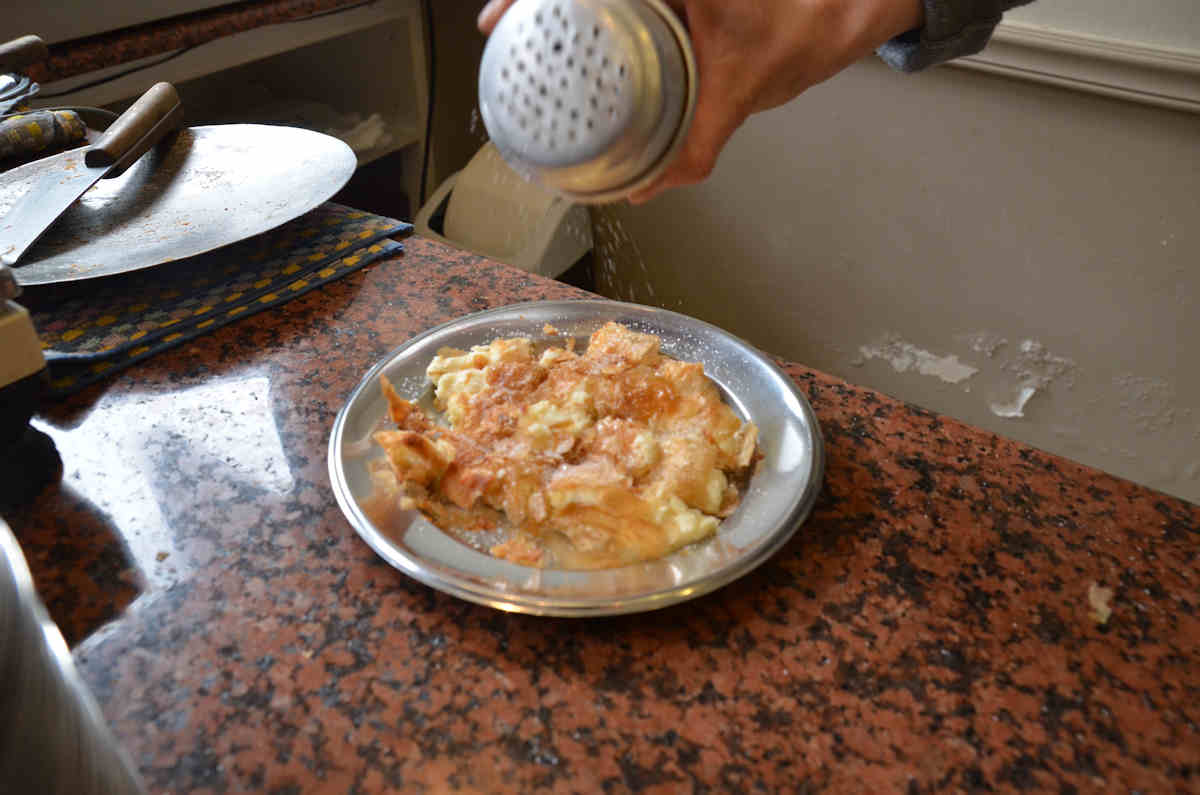
Source: www.greekgastronomyguide.gr
Maggiri
The Cretan maggiri is a fresh pasta that resembles a very wide noddle. The pasta dough is rolled out and cut into small squares. Half the pasta is boiled in lamb broth and half pan-fried. Pasta pieces are mixed together and served with anthotyros cheese. This is an exquisite combination of a crunchy and juicy pasta.
I tasted maggiri at the Kritamon Restaurant of Dimitris Mavrakis in the village of Archanes in Crete.
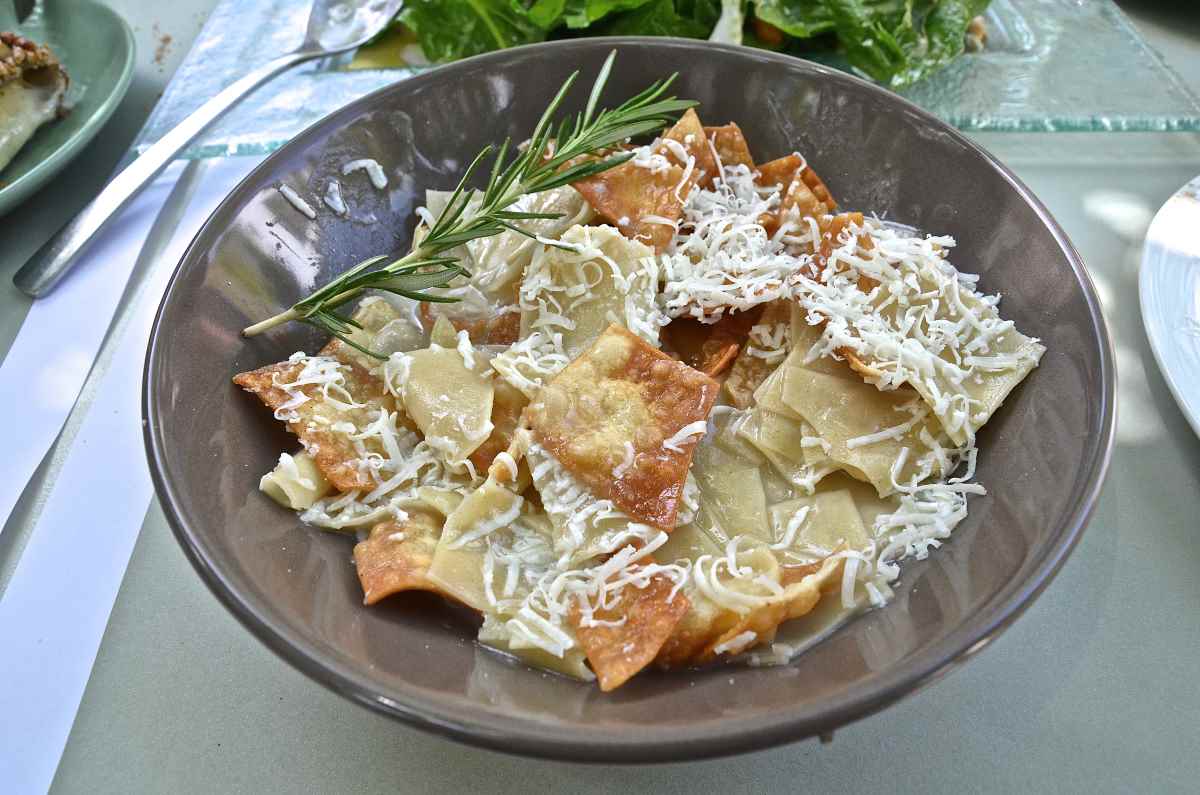
Cretan mezedes, the accompaniment to raki
Mezedes (pl. for mezes) are savoury appetizers offered in small helpings in the traditional cafés (kafeneia) of Greece as an accompaniment to an alcoholic drink. Mezedes, an integral part of Greek cuisine, hold a prominent place in Greek culture, incorporating a deeply rooted tradition, that of sharing food and drink with friends in a no-frills environment.
The word meze comes from the East; it is a Turkish word. In Greece, mezedes are served to accompany ouzo (an aniseed-flavored distilled spirit, the famous drink that turns white when water or ice is added to it), tsipouro (a strong distilled spirit with an alcohol content of 45% made from the residue of crushed grapes) and sometimes, wine, retsina (wine with a delicate aroma of pine on the nose and a pale to golden-yellow colour) and beer. The best place to savour a meze is at the kafeneia. There, mezedes are always served in small plates, since they are not meant to satisfy one’s hunger but rather to prevent the side-effects of drinking on an empty stomach.
In Crete, mezedes accompany raki.
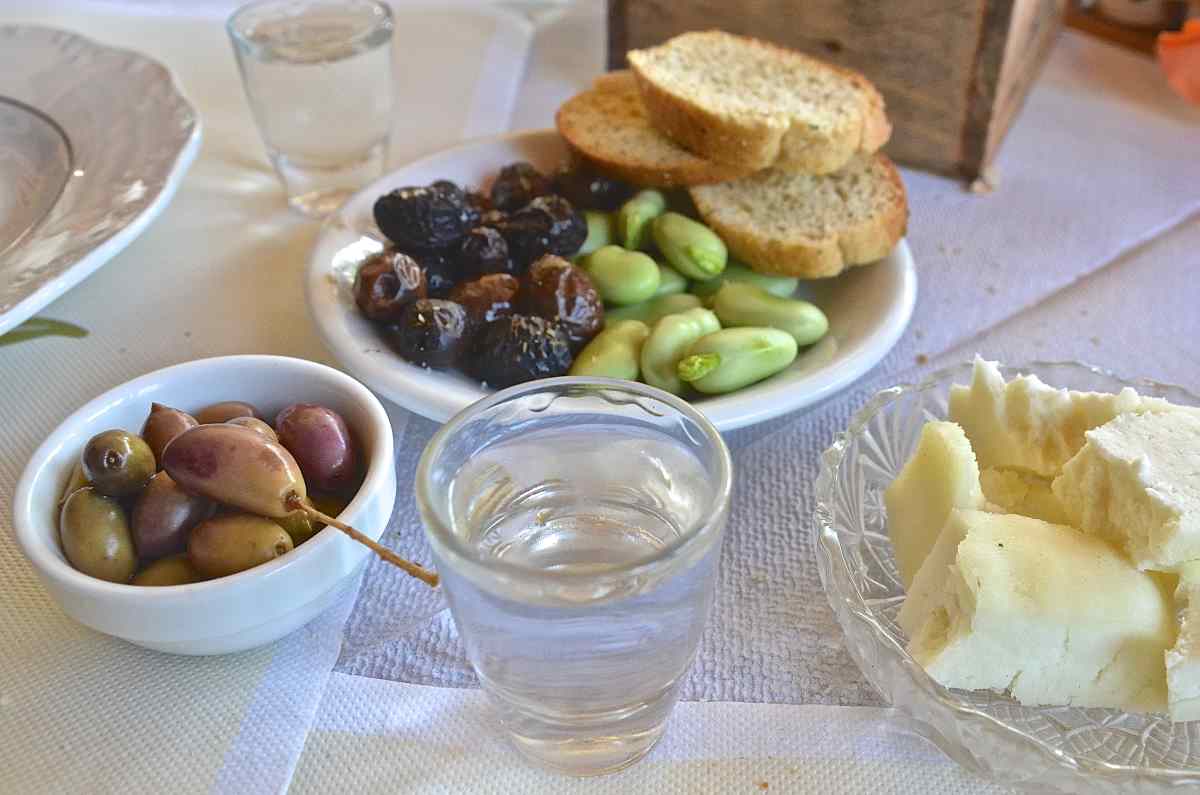
Sfakiani pita (pie)
What about pies? Should you expect to savour delicious pies in Crete? The answer is positive. Certainly! Just like in the rest of Greece, pies occupy a significant part in Cretan cuisine.
Here pies are made with dough, dairy produce – mostly soft white cheeses (myzithra – a whey cheese made from either sheep’s or cow’s whey to which whole milk is sometimes added, xynomizithra – a soft, sour cheese, anthotyro – a soft, young cheese made with the residual whey left over after the production of graviera and the addition of whole milk, pichtogalo Chanion – a soft spreadable cheese made from sheep’s milk or from a combination of sheep’s and goat’s milk. Pichtogalo has a sour taste and a smooth texture and has been granted PDO status), wild herbs (fennel, etc.) and other aromatic herbs growing on the Cretan earth, such as mastic, cumin, bay leaves, cinnamon.
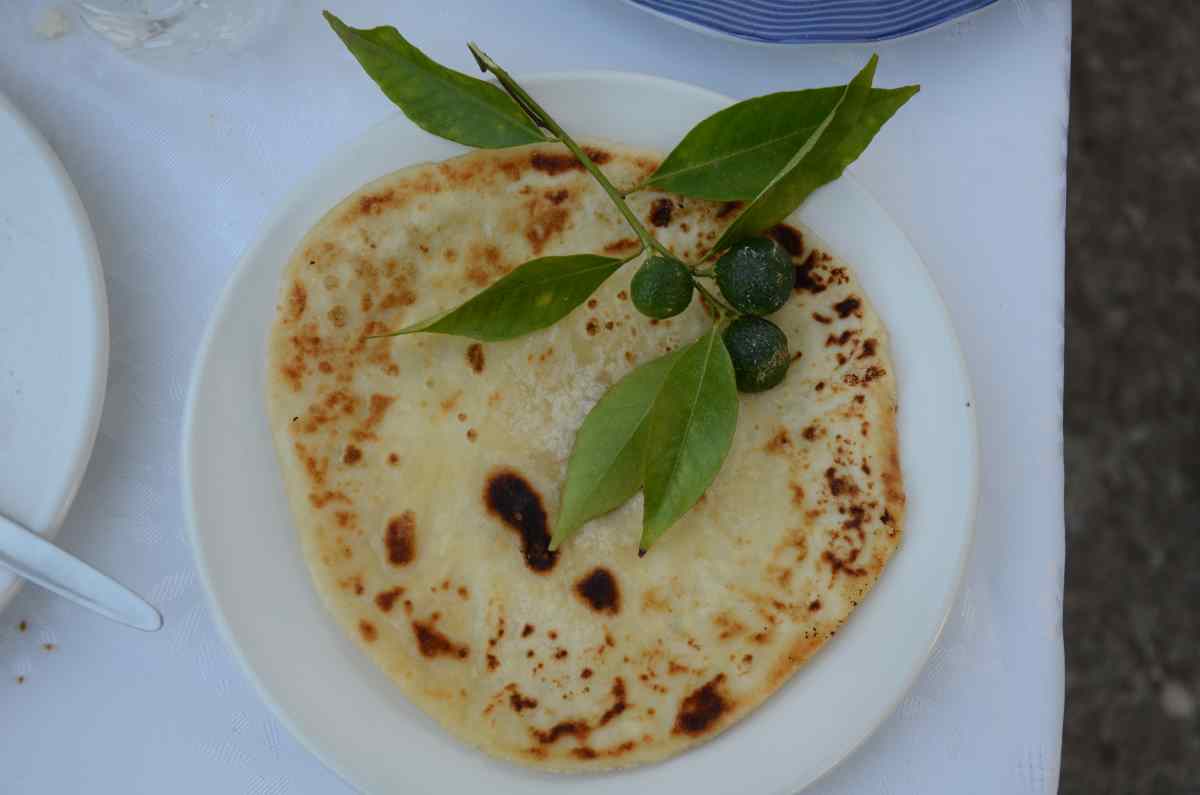
Μore at Greek Gastronomy Guide…
Source: www.greekgastronomyguide.gr
On the island of Crete, apaki (cured pork), a unique Cretan delicacy, is produced by butchers and many well-known processed meat factories, such as Lambrakis, Markakis and Antonakis. Out of those significant local producers, I chose to meet Michalis Vavourakis, a mechanical engineer from Rethymno. Driven by his love for nature and this faith on organic farming and livestock, Michalis Vavourakis, a man that has adopted a philosophical approach to life, decided to dedicate himself to organic pig raising in his own Vavourakis Farm.
Located on a hilltop in the village of Koksare, in the municipality of Rethymno, Vavourakis Farm stretches over an expanse of 170 square meters. In an unspoiled natural landscape, 20 sows and a population of 200 pigs are raised and bred naturally without the use of hormones or medicaments, fed exclusively with the farm’s crops, grains and roots, wild herbs, thyme and certified cereals.
Μore at Greek Gastronomy Guide…
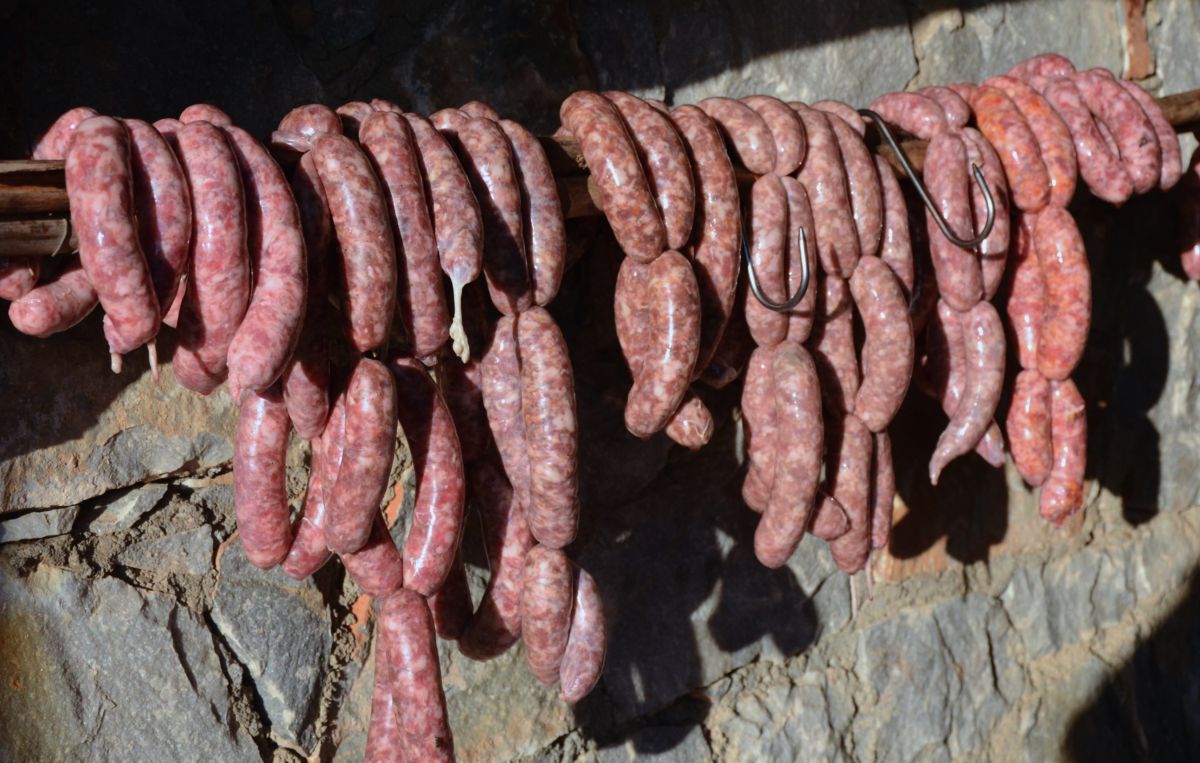
Source: www.greekgastronomyguide.gr
Kaiti Dinapoja
Dinapoja cottage industry in Heraklion, Crete, produces liqueur and syrups.The story behind Dinapoja is the personal story of Kaiti Dinapoja whose life changed without a warning in her early fifties. It was two personal unfortunate events that urged Kaiti to make a drastic change in her life.
“If you are 50 years old facing serious health problems and you get a divorce, if you lose a prosperous life and all of a sudden you realize that you haven’t got a penny in your pocket, well, you definitively need to do something, you definitively need to move heaven and earth to stand on your own feet”.
Kaiti gave a literal meaning to this idiom. Indeed, Kaiti explored the Cretan land, its mountains and glens, and collected all the flowers, aromatic herbs offered by the Cretan nature reaping also the benefits of Cretan fruits. In the end, she set up a workshop, in order to offer everything she harvests ready to drink and enjoy in a glass!
Μore at Greek Gastronomy Guide…
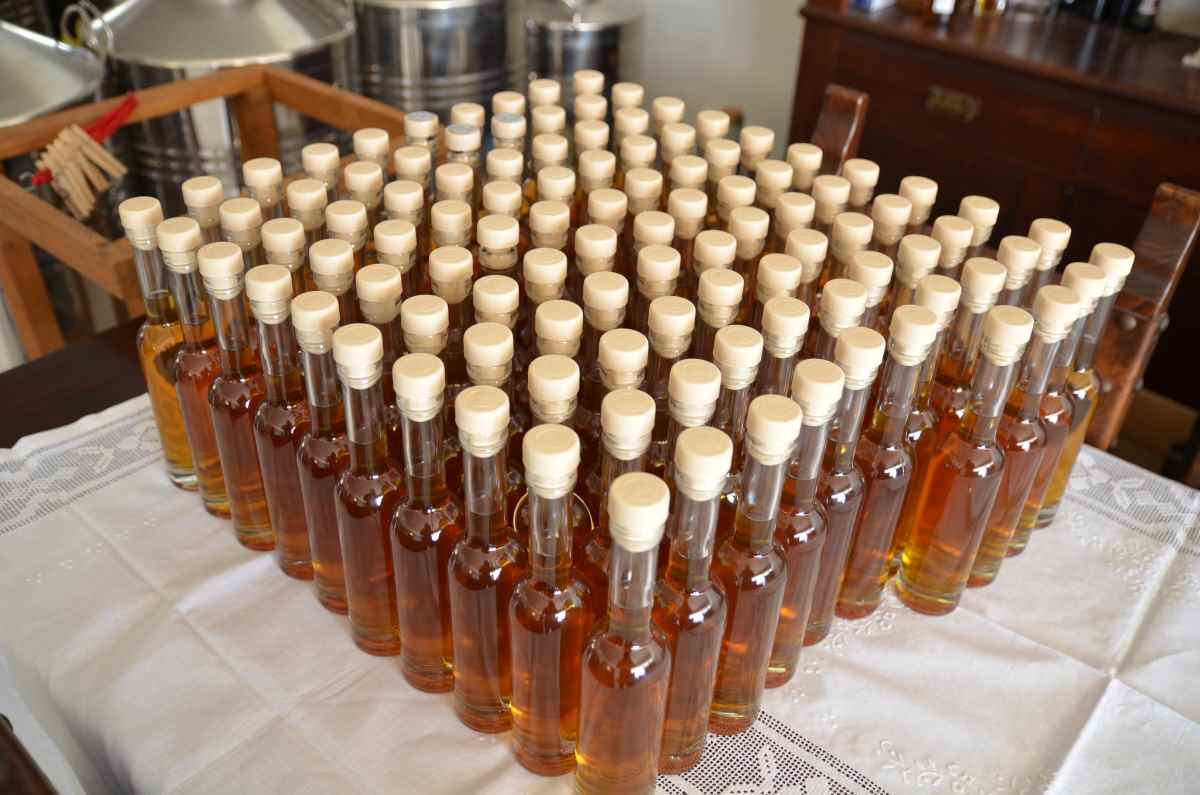
Source: www.greekgastronomyguide.gr
Located one breath away from Athens, the Saronic Golf Islands have become a popular holiday destination, mostly for the Athenians. Thus, except for tourism, there are hardly any other professional activities developed and namely in the primary sector. The Sorros dairy farm in Aegina, of a family with a long tradition in meat and dairy products, is a shining exception to this rule.
Nektarios, the father, is responsible for the cattle. Epistimi, the mother, runs the butcher shop that is located next to Aegina’s Fish Market. Recently, a new productive member has been added to the family, Sarantis, the son, who recently graduated from the Dairy School of Ioannina, a city at the north of Greece. Although novice on dairy farming, Sarantis produces traditional Aegina cheeses, such as gkeremezi (a soft cheese with a sour taste) and ladotyri (literally oil cheese), made according to his grandmother’s or local traditional recipes using local milk. The cheeses of Sarantis are in high demand, so now Sarantis is getting the extra milk quantities needed from two young milk producers on the island.
Μore at Greek Gastronomy Guide…

Source: www.greekgastronomyguide.gr
What happens when a company brings together the Swiss rationalism and professionalism, the Greek way of looking at life – remaining unaltered for centuries -, the quality of life in Greece, fantasy and creativity?
The answer is quite simple; a very successful business, a little gem – showcase of European entrepreneurship -, a company celebrating the successful synthesis of Greece’s long-term legacy in producing olive oil- olive trees caressed by Greece’s ample sunlight and its unique climate offer generously this life-giving source – with state-of-the-art technology and the most advanced marketing strategies.
Μore at Greek Gastronomy Guide…
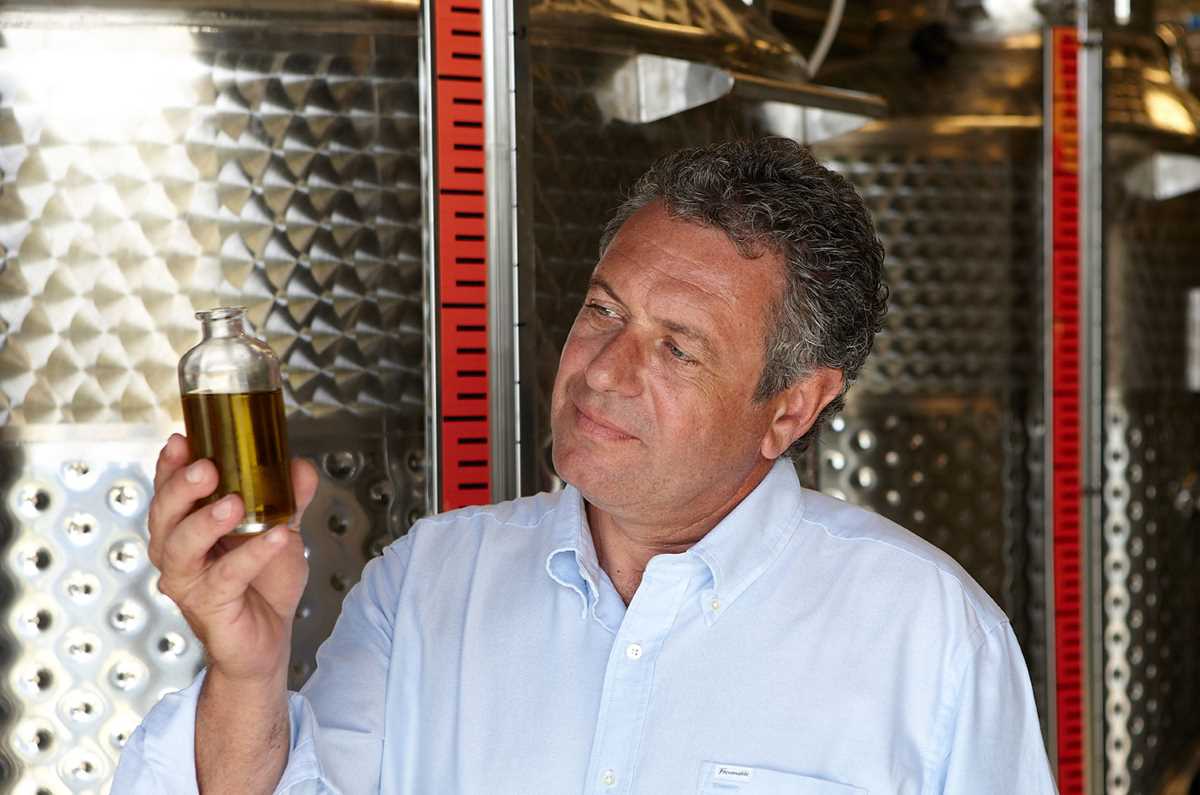
Source: www.greekgastronomyguide.gr
I met Eleni Kypraiou during an event – actually during the filming of “Elliniko Proino” (Greek Breakfast) TV programme dedicated to the island of Aegina. Fascinated by Eleni’s interventions and her radiant personality, further to her invitation to visit her estate, next thing I knew, I found myself in Aegina early dawn on the very next day.
At her mansion, over coffee served with delicious goodies, I learned that Eleni’s grandparents came from the island of Hydra and that, as a compensation for their participation in the Greek Revolution of 1821-1828, they had been given a vast expanse of land in the area of Perivolla (where the estate of Eleni is currently located). Eleni suggested we visited the estate. We set off around 08.30. Driving in Eleni’s pickup truck through earth roads, narrow and stony as sheep paths, we finally reached our destination. This is where things got tricky for me; with her sabots on, Eleni was climbing cliffs and dry stone walls, exhibiting the excellent cliff-climbing skills of wild goats, to show me her new acquisition, her new beautiful estate at Katopides as she was explaining to me that she had to preserve the stone walls from falling, as well as how she performed a drilling, how she built a stone fence at the estate, etc. As for me, I was trying to catch my breath and, totally exhausted, I was struggling to keep up with her quick pace.
Μore at Greek Gastronomy Guide…
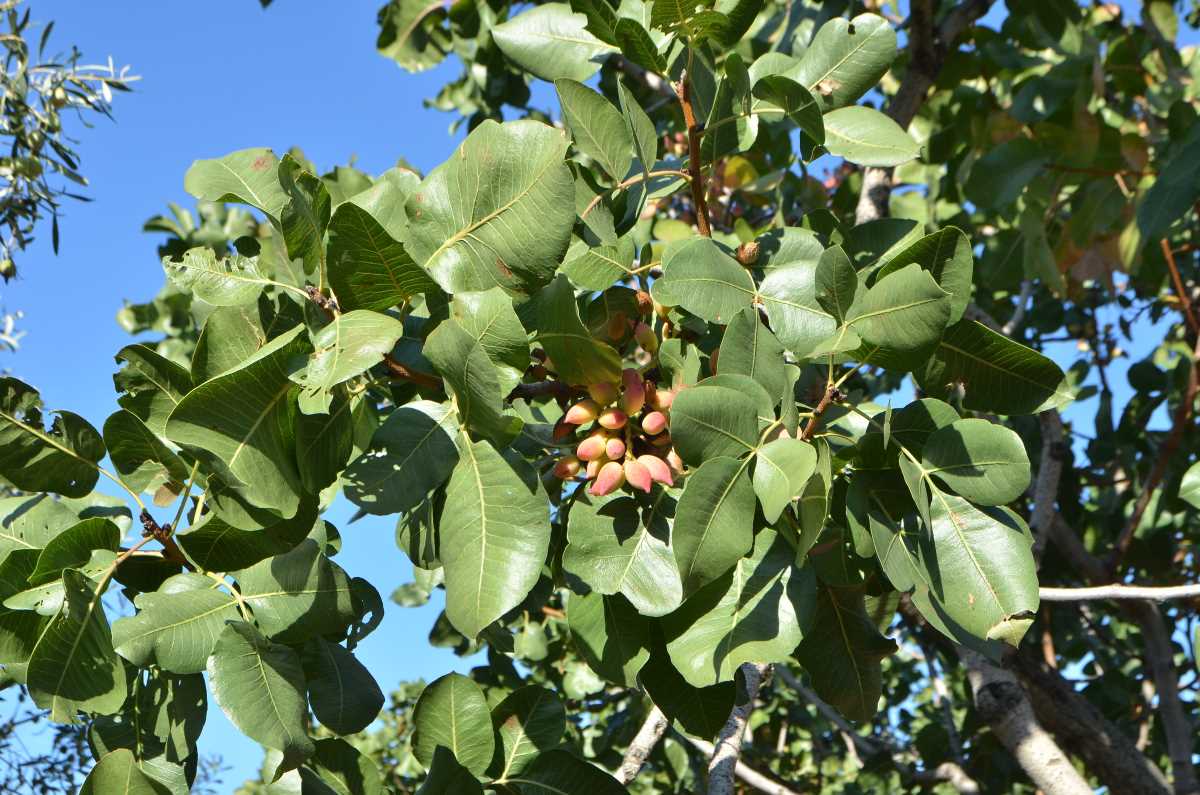
Source: www.greekgastronomyguide.gr
Fistiki (pistachio) is the fruit of the pistachio-tree, a small deciduous tree. Pistachio is native to Iran with the earliest traces of the fruit being eaten dating back to the 7th millennium BC. The pistachio-tree ranges among the trees known after the conquests of Alexander the Great. During the Byzantine Empire, pistachios used to be very popular and were offered in the eateries as appetizer to accompany wine. Currently, pistachio-trees are widely cultivated in Asia, the Mediterranean and the United States.
In 1896, Nikolas Peroglou created the first organized pistachio-tree plantation in Aegina planting pistachio seeds that he had possibly brought from Syria. From Aegina, the cultivation of pistachio-trees expanded first to Attica and from there, to the rest of Greece. Growing on the poor, limestone soil of the island, the pistachio-tree of Aegina utilizes the properties of the soil to its fullest benefit. Enjoying a dry climate, limited irrigation and close proximity to the sea, the fruit of this tree is endowed with particular organoleptic properties, an exquisite taste and aroma that have justly attributed to the pistachio of Aegina a worldwide fame; the pistachio of Aegina is currently considered to be the best in the world.
Μore at Greek Gastronomy Guide…

Source: www.greekgastronomyguide.gr
Aegina Dry Nuts
The company “Fistiki Aiginis PDO” – Nikos Tzitzis, under the trading name “AIGINA® – Dry Nuts” is a family business that was founded in 1952, when Giannis Tzitzis decided to process and package himself the pistachios growing on his estates. To this end, the company’s field of activity is the production, processing (cleaning, sorting), roasting and packaging of this unique local product of Aegina.
Equipped with imported state-of-the-art machinery, the company’s facilities were built on a privately owned land plot located in close proximity to the estates, so as to ensure direct connection between production, processing and packaging. The company was the first company in Greece to be granted a license to operate a plant for processing and packaging the famous “Fistiki Aiginis” and almond.
Μore at Greek Gastronomy Guide…
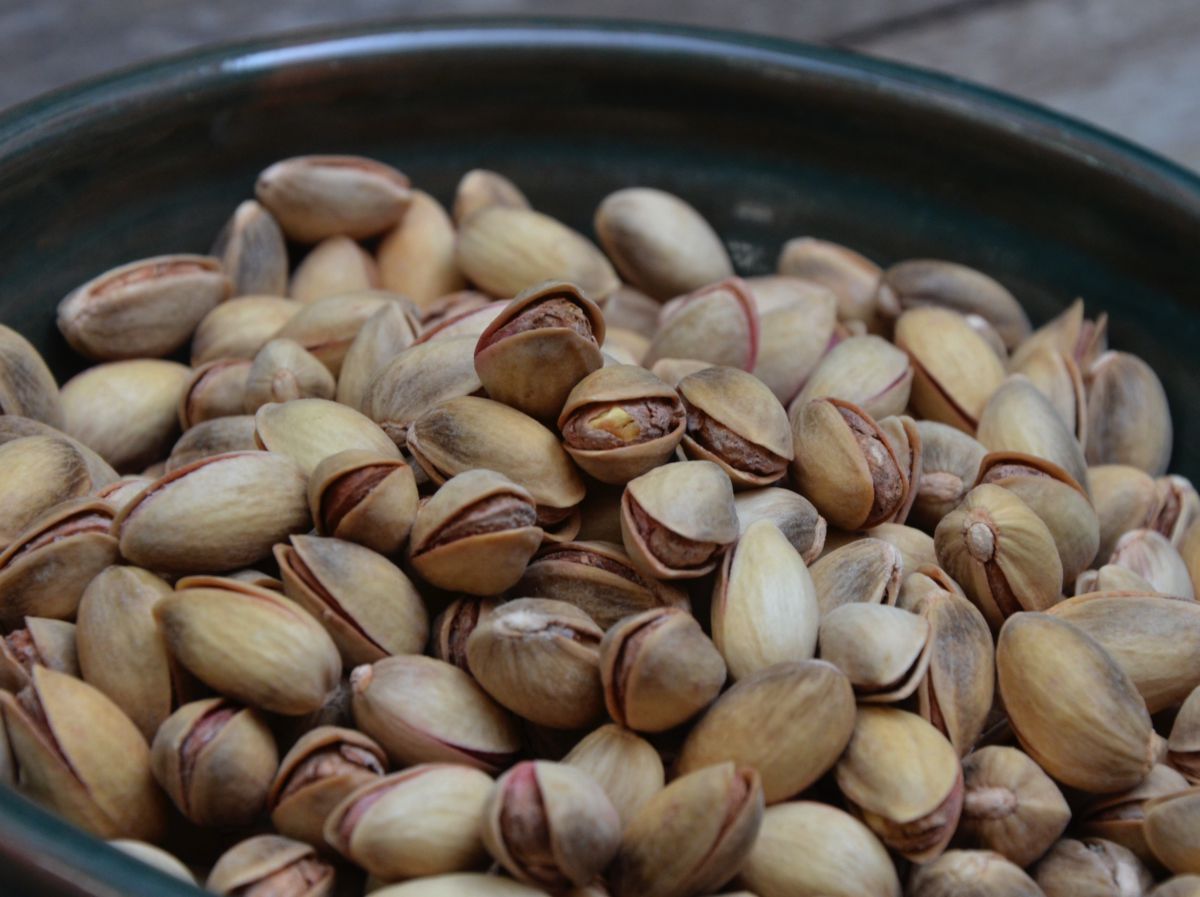
Source: www.greekgastronomyguide.gr
Mavromatis is a family run enterprise. Its first plant opened in 1965 in Corfu town and it specialised in the promotion of the kumquat in sweets and liqueurs. In 1984 it moved to the Palaiokastritsa road, and in 2008 it transferred to new quarters in an ultramodern factory.
Production, which absorbs 80% of the island’s kumquat crop, runs to an annual million bottles of liqueur and 50 tons of sweets. The company has since expanded to include ouzo, brandy and 20 different fruit liqueurs. Its red kumquat, at 22-25 % alcohol (44-50 proof), is a liqueur with a unique taste and aroma that comes from the peel of the fruit. It may be served straight, with ice cubes, or mixed with juices or spirits (vodka, brandy, whisky, etc).
Μore at Greek Gastronomy Guide…
Source: www.greekgastronomyguide.gr

